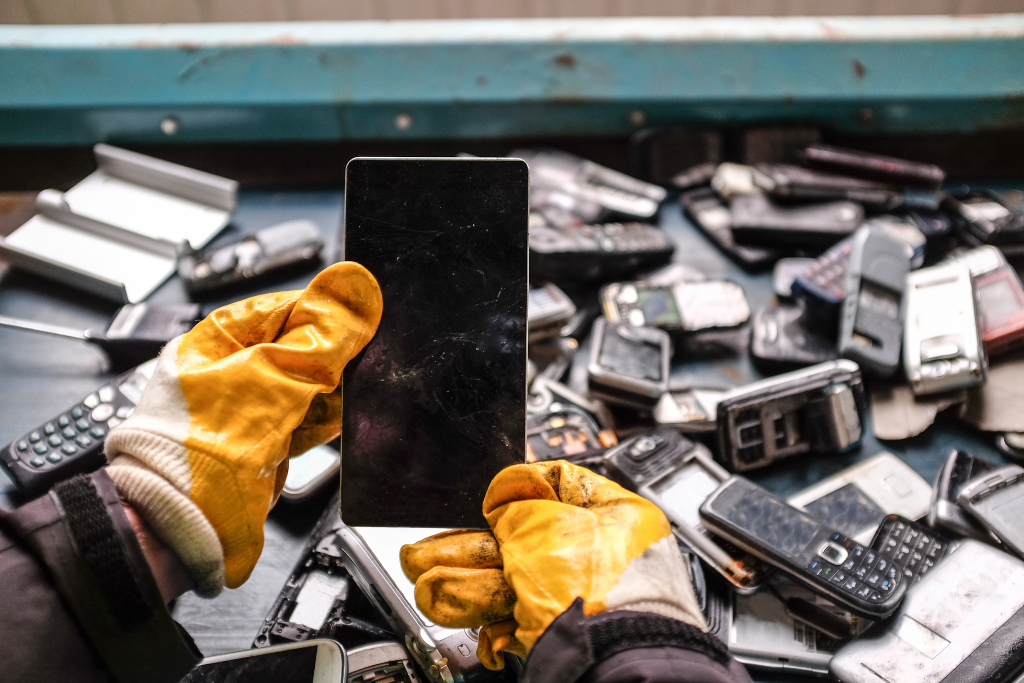The future of e-waste recycling is a combination of challenges and immense potential. As we become increasingly tethered to our electronic devices, understanding the implications of e-waste becomes paramount. These discarded electronic marvels – smartphones, laptops, tablets, and other gadgets – contain treasures in metals and plastics and harbingers of environmental doom if not dealt with responsibly. Let’s delve into the top 10 breakthroughs molding tomorrow’s e-waste recycling.
Key Takeaways:
- Technological innovations promise more efficient e-waste recycling.
- The circular economy can redefine how electronic products are designed and recycled.
- Global collaboration and consumer behavior play a pivotal role in e-waste management.
1. Technological Advancements
The horizon of e-waste recycling gleams with promising technological progress. Advancements in robotic automation, artificial intelligence, and machine learning are streamlining recycling processes. This not only makes recycling more cost-effective but also minimizes environmental repercussions.
2. Urban Mining
With e-waste accumulation on the rise, “urban mining” is emerging as a sustainable alternative. This process extracts invaluable materials like gold, silver, and rare earth metals from discarded electronics, reducing the environmental strain caused by traditional mining.

3. Embracing the Circular Economy
A paradigm shift is underway with the circular economy model at its heart. It emphasizes designing products that are effortlessly repaired, upgraded, and recycled. The future will likely witness more manufacturers integrating this model, enhancing electronic recycling and resource recovery.
4. Advent of Eco-friendly Materials
Material science is poised to revolutionize electronics by developing eco-friendly components. Such materials, apart from being environmentally benign, promise ease in recycling.
5. Extended Producer Responsibility (EPR)
EPR policies, adopted by several nations, mandate manufacturers to oversee their products’ complete lifecycle, including recycling and disposal. This approach nudges firms to design recyclable products from the outset.
6. Amplified Consumer Awareness
An informed consumer base will invariably shape the e-waste recycling landscape. With rising awareness about e-waste’s environmental footprint, there’s a burgeoning demand for responsible recycling avenues. This awareness can drive accessible e-waste collection and recycling initiatives.
7. Stringent Policy and Regulation
The regulatory landscape is evolving, with governments likely tightening e-waste disposal and recycling norms to safeguard the environment and public health. Such regulations will foster ethical e-waste management.
8. Unified Global Endeavors
Tackling e-waste necessitates global cooperation. Collaborations spanning countries, industries, and organizations can instate superior e-waste recycling standards and practices.
9. Consumer Behavior Evolution
The cornerstone of the e-waste recycling future is the consumer. Educating users about the recycling significance of recycling and motivating them to utilize recycling services will be paramount.

10. Revolutionizing E-waste Collection
Tomorrow’s e-waste recycling will likely be synonymous with convenience. Anticipate innovative e-waste collection methods, retail store drop-off points or personalized doorstep services.
In wrapping up, the e-waste recycling future will be sculpted by technological novelties, green practices, governance, and user awareness. Recognizing and addressing the mounting e-waste dilemma is imperative for environmental preservation, resource conservation, and curtailing health risks linked with unsuitable disposal. By harnessing a circular economy approach and fostering global cooperation, a sustainable e-waste recycling epoch awaits.
